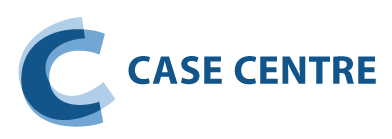


- Not connected
- |
- Login

Top Glaciers : un nouvel âge de glaces ? (A et B)
Top Glaciers Inc.: A New Ice Age? (A & B)

- IJCSM Best Case Award
- French,
- English
- Stratégie,
- Croissance,
- PME,
- Modèle d’affaires,
- Sous-traitance,
- Valeurs des dirigeants
- Strategy,
- Growth,
- SME,
- Business model,
- Subcontracting,
- Managers’ values
Top Glaciers (TG) est une société montréalaise issue, début 2017, de la fusion de quatre entreprises québécoises spécialisées dans la fabrication de crèmes glacées et de sorbets. Elle met au point les marques réunies par la fusion – Bilboquet, Solo fruit, Hudson et Lambert – et se situe dans le segment des crèmes et desserts glacés « artisanaux » de grande qualité. La partie A du cas est décisionnelle : elle invite les étudiants à se mettre dans la peau des dirigeants de Top Glaciers en juin 2020 et à faire un diagnostic de l’entreprise pour savoir quelles devraient être la stratégie et les priorités des prochains mois et années. La partie B est courte. Elle explique comment l’entreprise a évolué depuis la fin de la partie A.
Top Glaciers Inc. (TG) is a Montreal-based company that emerged in early 2017 from the merger of four Quebec-based ice cream and sorbet companies – Bilboquet, Solo Fruit, Hudson, and Lambert. TG operates in the high-end “artisanal” ice cream and frozen dessert segment. Part A of the case is decisional: it asks students to conduct a business assessment of the company in June 2020 to determine TG’s strategy and priorities. Part B is short. It looks at the company’s evolution since the end of Part A.
- Consumer goods
- Développer ses habiletés à poser un diagnostic et formuler des recommandations stratégiques en mobilisant plusieurs outils d’analyse (par exemple : Business Model Canvas, matrice Ansoff, stratégie d’entreprise).
- Comprendre les différences et les synergies entre un modèle d’affaires B2C et un modèle d’affaires B2B pour les mêmes produits.
- Analyser l’élaboration d’un avantage d’entreprise (corporate advantage), qui est plus que la somme des avantages des différentes activités de l’entreprise.
- Develop the ability to diagnose a business and formulate strategic recommendations using analysis tools such as the business model canvas, the Ansoff matrix, and corporate strategy.
- Understand the differences and synergies between a B2C and a B2B business model for producing the same products.
- Analyze the creation of corporate advantage, which is more than just the sum of the advantages of various activities.


